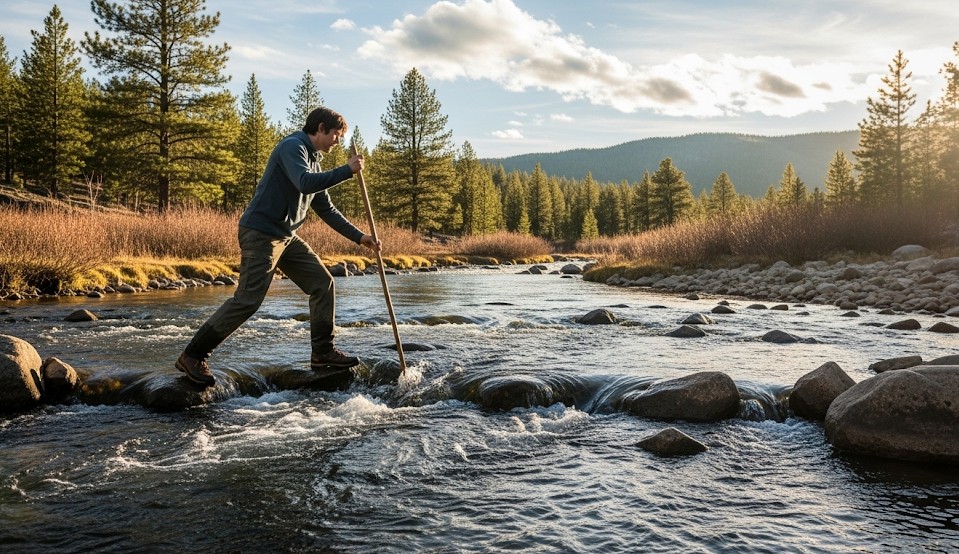How to Cross a River Safely

Objective
Cross swift water without getting swept, using site selection, body position, and team methods.
Scenario (Example)
Example: Spring snowmelt, knee-to-thigh depth, cold and opaque water, braided sections available downstream.
Choose the Spot
- Look for wide, shallow, braided sections.
- Avoid outside bends and debris strainers.
- Scout both banks for entry/exit.
Solo Wading
- Unbuckle hip belt/chest strap.
- Face upstream at slight angle; three points of contact.
- Shuffle feet; probe with a stick.
Team Crossing
- Line abreast: Shoulders together, strongest upstream; move sideways.
- Single staff: One stout pole held by middle person; rotate leadership as needed.
Recovery
If swept, roll onto your back, feet downstream, knees slightly bent; ferry angle toward shore.
Real Example
Three hikers used a braided bar downstream, crossed in 90 seconds with unbuckled belts and a shared staff, avoiding a deeper upstream chute.
Checklist
- Wading staff
- Dry bags for insulation layers
- Towel and warm hat
- Hot drink supplies on the far bank
Contingencies
- Rising water → turn back; wait for lower flows.
- Cold shock → shelter and hot drink before continuing.
After-Action
Note which features predicted depth/velocity best for future crossings.
← Previous | All Articles | Next →
